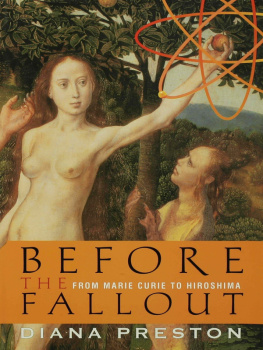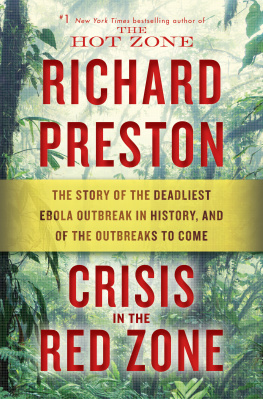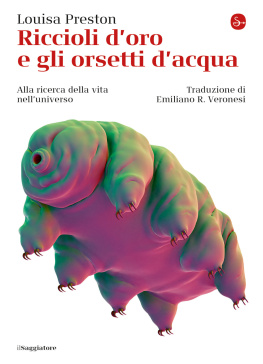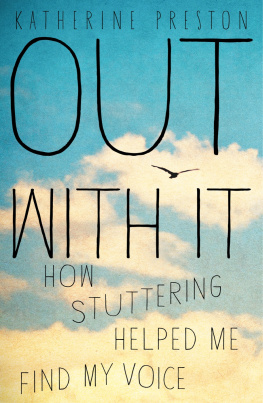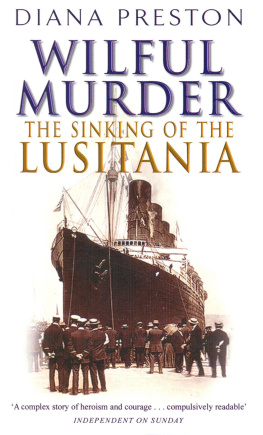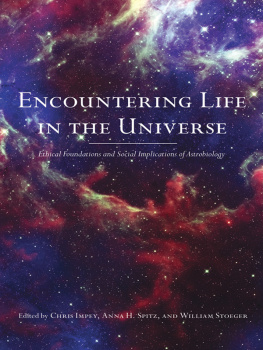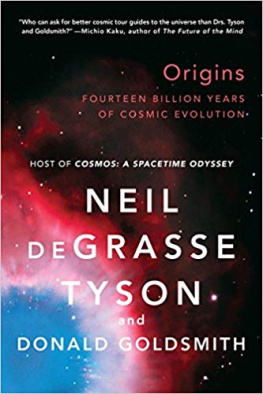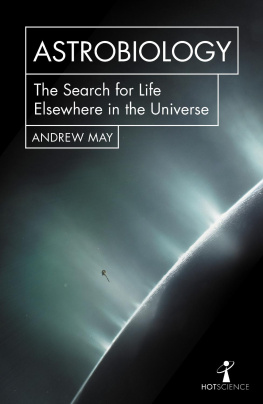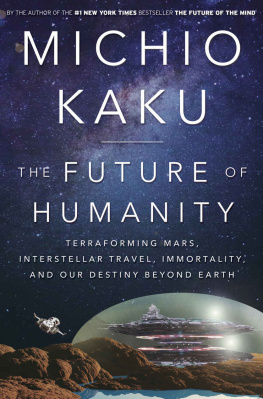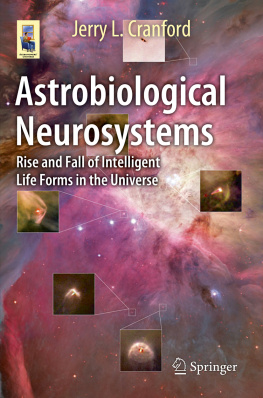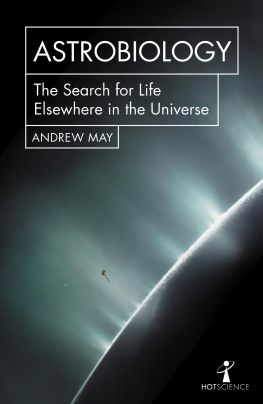GOLDILOCKS AND THE WATER BEARS
Also available in the Bloomsbury Sigma series:
Sex on Earth by Jules Howard
p53: The Gene that Cracked the Cancer Code by Sue Armstrong
Atoms Under the Floorboards by Chris Woodford
Spirals in Time by Helen Scales
Chilled by Tom Jackson
A is for Arsenic by Kathryn Harkup
Breaking the Chains of Gravity by Amy Shira Teitel
Suspicious Minds by Rob Brotherton
Herding Hemingways Cats by Kat Arney
Electronic Dreams by Tom Lean
Sorting the Beef from the Bull by Richard Evershed and Nicola Temple
Death on Earth by Jules Howard
The Tyrannosaur Chronicles by David Hone
Soccermatics by David Sumpter
Big Data by Timandra Harkness
For Daniel and Renley
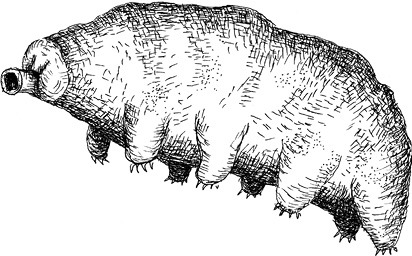
GOLDILOCKS AND THE WATER BEARS
THE SEARCH FOR LIFE IN THE UNIVERSE
Louisa Preston

Contents
The tale of Goldilocks and the Three Bears has charmed generations of children the world over, and has been borrowed and scientifically woven into the title of this book again hoping to charm, but also challenge, its valued readers, encouraging you to think a little differently about the world and indeed the Universe in which we live.
Parents and teachers alike have used the fictional narrative of a plucky young girl and her cheeky invasion of the home of a family of bears to develop the imagination and story creation skills of children, as well as to convey levels of acceptable behaviour and manners, respect for personal privacy and respect of other peoples property or belongings. And yet it contains another message that hopefully this book will inspire its readers to consider when imagining life out there in and beyond the final frontier : the idea that something has to be just right for it to be useful. The chairs tried by Goldilocks were either too big, too small or just right , the porridge was too hot, too cold or just right and the beds were too hard, too soft or just right . Only when each condition was just right and therefore acceptable to Goldilocks was the porridge eaten or the chair sat in or the bed used for sleeping. Just as in the search for life in the Universe, Goldilocks was searching for conditions that were just right for her and so are we. Hunting across the right part of the Galaxy for planets and moons that are the right size, orbiting around the right type of star at just the right distance to be able to keep water as a liquid on their surface. Astrobiologists and Goldilocks have much in common.
In this book we shall take a tour of the biological Universe, exploring what life is made of, what it needs to originate and thrive, how resilient and adaptable it can be and how conditions do not actually have to conform to our ideas of what is or is not just right for organisms to survive and prosper. In many areas throughout the Solar System and beyond, conditions cover a multitude of extremes too hot or too cold, too acidic or too alkaline, too dry or too wet, or too light or too dark and in each of these on Earth, life has found its own version of just right so it can survive. The Goldilocks story of life is warped and stretched as life finds a way, no matter the challenges. If this is the tale on our planet, then why should it not be the same on other planets and moons, in other galaxies, and throughout the Universe? We may not be alone in the darkness of space for much longer.
What about the Water Bears? I hear you ask. Well, youll have to continue reading to see where these little superheroes fit into this cosmic fairy tale
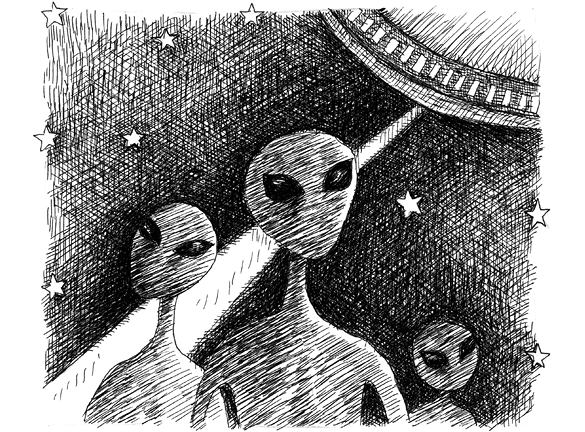
One of the oldest relationships on Earth is that between fact and fiction. It has not always been a happy one but over the centuries it has become apparent that one needs and inspires the other in more ways than we ever believed. The fact-loving subject of science is one of the most exciting disciplines in the world, although its teachings can get bogged down in boring educational texts and hidden behind fear, dogma and confusion. The analytical nature of science gives us the ability to perceive the anatomy of the Universe and every molecule in it, but it is the human imagination that gives it life. Descriptions of the history of the Earth, the stars sparkling across the cosmos, worlds so far away we may never see them and the wonderment of what life forms potentially exist out there, contain more exotic characters and magical realms than any fictional tale. By using storytelling, the walls of science are being broken down and a self-conscious reading public, aware of and excited by its own progress and the rapidly changing world around it, can finally engage with a subject that makes the existence of such entities entirely possible.
An Astrobiologist is Born
More than 100 years ago in a leafy countryside town just outside London, a gentleman writes about the attempted destruction of the human race by Martians. A meteor lands on Horsell Common near Woking, Surrey, yet instead of a scorched lump of rock, the object opens disgorging alien beings from the planet Mars. These Martians have abandoned their dry and dusty home during its last dying gasps and travelled to the living, breathing Earth in the hope of their salvation. With two large, dark-coloured eyes and a lip-less mouth, a big greyish bulk the size of a bear, glistening like wet leather, and brandishing two giant tentacles instead of arms, these monstrous creatures emerge on to the Earth only to struggle to breathe in the oxygen-rich atmosphere and be forced to retreat quickly into their ships. They build frightening three-legged metallic machines with which to lay waste to the towns and villages west of London while forging their way to the capital. They extinguish everything and everyone in their wake, firing deadly heat-rays, spreading poisonous black smoke and a pervasive red weed. This tale ends well for humanity (spoiler alert!) as after a bitter struggle, and at a point where a Martian victory seems inevitable, a humble terrestrial microbe delivers the final blow. Bacteria, against which it turns out the Martians have no defences, infect and kill the invaders, ultimately saving humanity and the entire Earth.
Englands father of science fiction, H.G. Wells, penned this story in 1897. Instead of instilling fear, my first exposure to classic science fiction at a very young age made me curious. Was there actually life on Mars that could one day invade us? How could a tiny microbe like the mould that grows on cheese kill the aliens when the great and powerful humans could not? Add these questions to the fact that the entire story took place in my home county and completely annihilated the town in which I grew up, who wouldnt be hooked? This serial called The War of the Worlds saw H.G. Wells write the first alien invasion story and create a legacy of distrust, yet also curiosity, surrounding the possibility of contact with alien life. He was one of a few in the nineteenth century who began to popularise the alien, both negatively and positively, and brought to the public arena the science behind the search for extraterrestrial life and the environments that exist on other worlds. This story and others like it have straddled the boundary between science fact and science fiction, inspiring generations of scientists to pursue space science, including me, and paved the way for a new scientific discipline to be born: Astrobiology.



